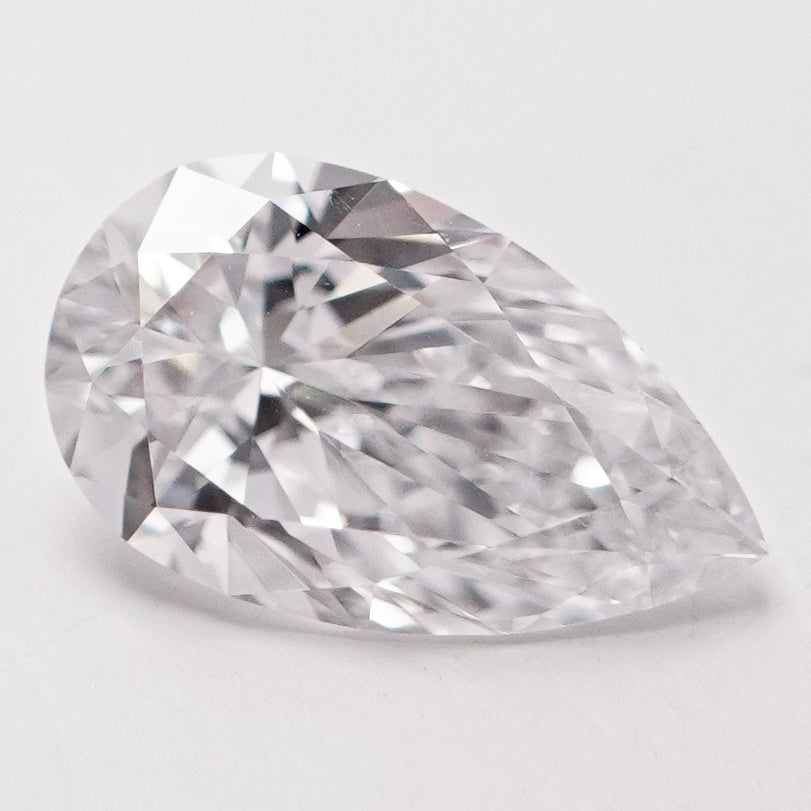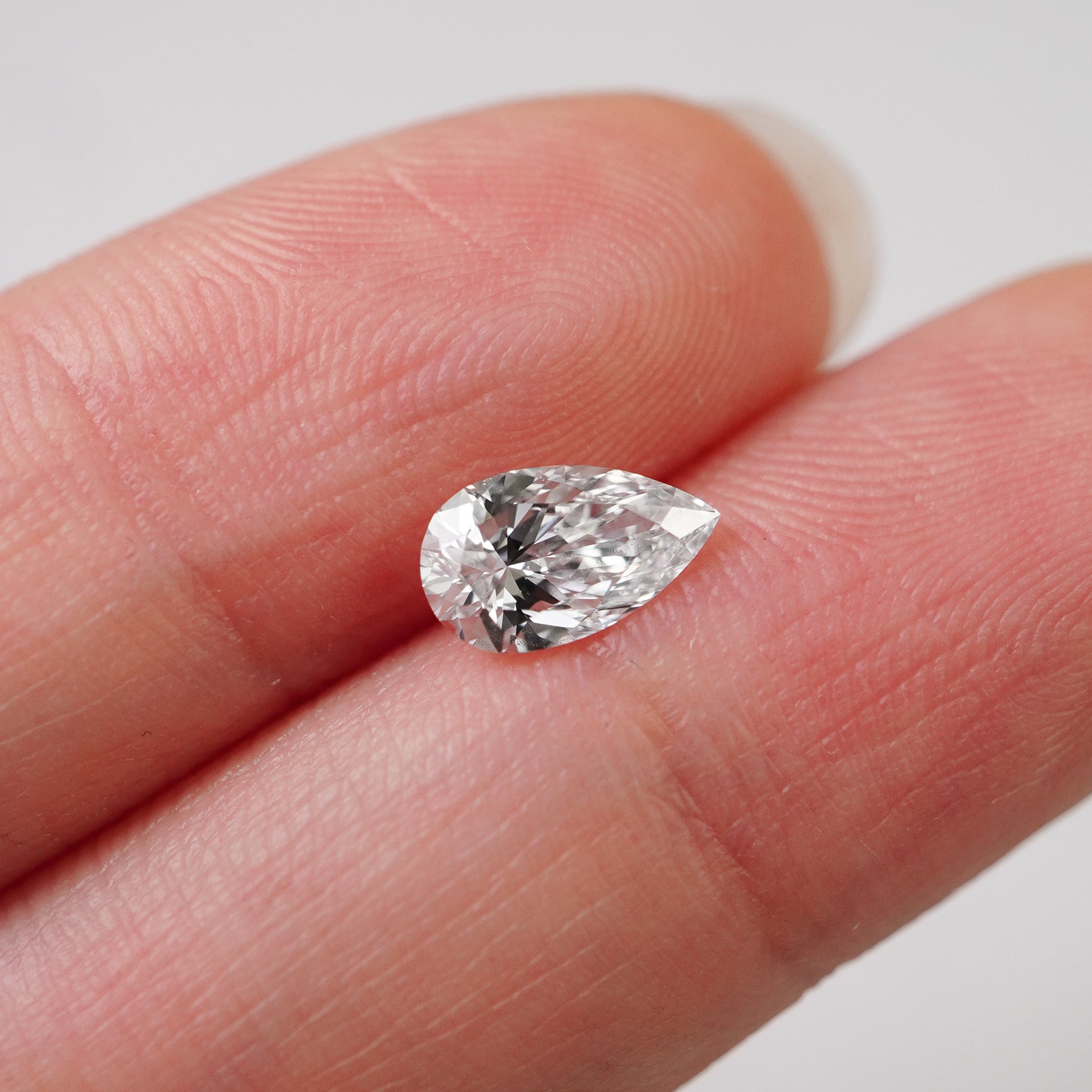A Deep Dive into our exclusive 0.80 cts Type IIb White Diamond
01 Aug 2024
0 Comments
During our diamond sourcing visits, we came across an exceptionally rare diamond, classifed as a type IIb diamond.
But what makes this diamond so valuable? What exactly is a Type II diamond? Today, we explore the fascinating world of Type I and Type II diamonds and introduce you to our extraordinarily rare 0.80-carat Type IIb white diamond, certified by GIA.
Understanding Diamond Types: Type I vs. Type II
Diamonds are most usually defined according to their clarity, cut, color and carat weight. They can also be classified largely into two classes – type I & type II diamonds in accordance to the presence of Nitrogen and how the Nitrogen atoms are arranged in the structure of the diamond.
Diamonds are classified into two main types based on the presence of nitrogen traces:
Type I Diamonds
Type I diamonds are the most common, comprising about 98% of all gem-quality diamonds. They contain traces of nitrogen, which can affect their color and properties.
Type Ia Diamonds:
o Type IaA: Nitrogen atoms are paired (A aggregates), typically colorless.
o Type IaB: Nitrogen atoms are in clusters of four (B aggregates), often with a tiny of yellow or brown.
o Type IaAB: Combination of A and B aggregates. Varying degrees of color (light yellow or brown) depending on the mix of aggregates.
Type Ib Diamonds:
o Isolated nitrogen atoms give these diamonds a yellow or brown color. They are much rarer compared to Type 1a Diamonds.
Type II Diamonds
Type II diamonds are incredibly rare, representing only about 1–2% of all natural diamonds. They have little to no nitrogen.
Type IIa Diamonds:
o Nearly pure diamonds with exceptional transparency and often colorless or with light hues. They are the purest diamonds chemically. o Famous examples include the Cullinan and Koh-i-Noor diamonds.
Type IIb Diamonds:
o Contain boron, giving them a blue color. They can also be semiconductive. o Famous examples include the Hope Diamond and the Idol Eye Diamond.
Diamonds are classified into two main types based on the presence of nitrogen traces:
Type I Diamonds
Type I diamonds are the most common, comprising about 98% of all gem-quality diamonds. They contain traces of nitrogen, which can affect their color and properties.
Type Ia Diamonds:
o Type IaA: Nitrogen atoms are paired (A aggregates), typically colorless.
o Type IaB: Nitrogen atoms are in clusters of four (B aggregates), often with a tiny of yellow or brown.
o Type IaAB: Combination of A and B aggregates. Varying degrees of color (light yellow or brown) depending on the mix of aggregates.
Type Ib Diamonds:
o Isolated nitrogen atoms give these diamonds a yellow or brown color. They are much rarer compared to Type 1a Diamonds.
Type II Diamonds
Type II diamonds are incredibly rare, representing only about 1–2% of all natural diamonds. They have little to no nitrogen.
Type IIa Diamonds:
o Nearly pure diamonds with exceptional transparency and often colorless or with light hues. They are the purest diamonds chemically. o Famous examples include the Cullinan and Koh-i-Noor diamonds.
Type IIb Diamonds:
o Contain boron, giving them a blue color. They can also be semiconductive. o Famous examples include the Hope Diamond and the Idol Eye Diamond.
The Hope Diamond and the Idol’s Eye Diamond
Two of the most famous Type II diamonds are the Hope Diamond and the Idol’s Eye Diamond.
• The Hope Diamond: A stunning 45.52-carat deep blue diamond, the Hope Diamond is renowned for its exceptional size, color, and history. Its blue hue is due to the presence of boron, classifying it as a Type IIb diamond. This diamond has captivated audiences for centuries and remains one of the most famous gems in the world.
• The Idol’s Eye Diamond: This 70.21-carat diamond is believed to be the largest known natural blue diamond in the world. Its unique history and extraordinary size make it an object of fascination and immense value.
• The Hope Diamond: A stunning 45.52-carat deep blue diamond, the Hope Diamond is renowned for its exceptional size, color, and history. Its blue hue is due to the presence of boron, classifying it as a Type IIb diamond. This diamond has captivated audiences for centuries and remains one of the most famous gems in the world.
• The Idol’s Eye Diamond: This 70.21-carat diamond is believed to be the largest known natural blue diamond in the world. Its unique history and extraordinary size make it an object of fascination and immense value.
Our Rare 0.80 cts Type IIb White Diamond
We are proud to present our extremely rare 0.80 cts Type IIb white diamond, accompanied by a GIA certificate. The combination of its white color and Type IIb classification makes this diamond exceptionally unique and valuable.
Why Type II Diamonds are Investment-Worthy
• Rarity: With only 1–2% of diamonds classified as Type II, their rarity inherently increases their value. Type IIb diamonds, in particular, are even more scarce due to their unique boron content.
• Historical Significance: The allure of owning a diamond akin to the legendary Hope Diamond or Idol’s Eye Diamond adds immense historical and sentimental value.
• Investment Potential: The rarity and unique qualities of Type II diamonds often mean they appreciate in value over time, making them a wise investment choice.
Other features of our diamond
Color : D
Diamonds are graded on a scale from D to Z by the Gemological Institute of America (GIA):
D-F: Colorless. These diamonds have no visible color and are the most valuable.
D: Absolutely colorless. The highest grade.
E: Colorless. Minute traces of color only detectable by a gemologist.
F: Colorless. Slight color detected by a gemologist, but still considered colorless.
G-J: Near Colorless. These diamonds show slight traces of color that are often undetectable to the untrained eye.
K-M: Faint. Diamonds have a noticeable color tint.
N-R: Very Light. The color tint is more apparent.
S-Z: Light. Diamonds have an obvious color tint.
Clarity: IF Clarity
Diamonds are graded on a clarity scale that ranges from Flawless to Included:
FL (Flawless): No inclusions or blemishes visible under 10x magnification.
IF (Internally Flawless): No inclusions and only minor surface blemishes visible under 10x magnification.
VVS1, VVS2 (Very Very Slightly Included): Minute inclusions that are very difficult to detect under 10x magnification.
VS1, VS2 (Very Slightly Included): Minor inclusions that are somewhat easy to detect under 10x magnification
. SI1, SI2 (Slightly Included): Noticeable inclusions under 10x magnification.
I1, I2, I3 (Included): Obvious inclusions visible under 10x magnification and sometimes to the naked eye.
As you can see, the diamond we have featured has superior attributes and most importantly graded IIb- which is the highest grade a diamond can have. It is an investment in beauty, rarity, and unparalleled quality. This diamond is not just a gem; it is a symbol of the highest standards in the diamond world, making it an invaluable addition to any collection. Whether you're a connoisseur of fine gems or an investor looking for exceptional value, a diamond with these attributes stands as a testament to nature's most exquisite creations.
We are proud to present our extremely rare 0.80 cts Type IIb white diamond, accompanied by a GIA certificate. The combination of its white color and Type IIb classification makes this diamond exceptionally unique and valuable.
Why Type II Diamonds are Investment-Worthy
• Rarity: With only 1–2% of diamonds classified as Type II, their rarity inherently increases their value. Type IIb diamonds, in particular, are even more scarce due to their unique boron content.
• Historical Significance: The allure of owning a diamond akin to the legendary Hope Diamond or Idol’s Eye Diamond adds immense historical and sentimental value.
• Investment Potential: The rarity and unique qualities of Type II diamonds often mean they appreciate in value over time, making them a wise investment choice.
Other features of our diamond
Color : D
Diamonds are graded on a scale from D to Z by the Gemological Institute of America (GIA):
D-F: Colorless. These diamonds have no visible color and are the most valuable.
D: Absolutely colorless. The highest grade.
E: Colorless. Minute traces of color only detectable by a gemologist.
F: Colorless. Slight color detected by a gemologist, but still considered colorless.
G-J: Near Colorless. These diamonds show slight traces of color that are often undetectable to the untrained eye.
K-M: Faint. Diamonds have a noticeable color tint.
N-R: Very Light. The color tint is more apparent.
S-Z: Light. Diamonds have an obvious color tint.
Clarity: IF Clarity
Diamonds are graded on a clarity scale that ranges from Flawless to Included:
FL (Flawless): No inclusions or blemishes visible under 10x magnification.
IF (Internally Flawless): No inclusions and only minor surface blemishes visible under 10x magnification.
VVS1, VVS2 (Very Very Slightly Included): Minute inclusions that are very difficult to detect under 10x magnification.
VS1, VS2 (Very Slightly Included): Minor inclusions that are somewhat easy to detect under 10x magnification
. SI1, SI2 (Slightly Included): Noticeable inclusions under 10x magnification.
I1, I2, I3 (Included): Obvious inclusions visible under 10x magnification and sometimes to the naked eye.
As you can see, the diamond we have featured has superior attributes and most importantly graded IIb- which is the highest grade a diamond can have. It is an investment in beauty, rarity, and unparalleled quality. This diamond is not just a gem; it is a symbol of the highest standards in the diamond world, making it an invaluable addition to any collection. Whether you're a connoisseur of fine gems or an investor looking for exceptional value, a diamond with these attributes stands as a testament to nature's most exquisite creations.























